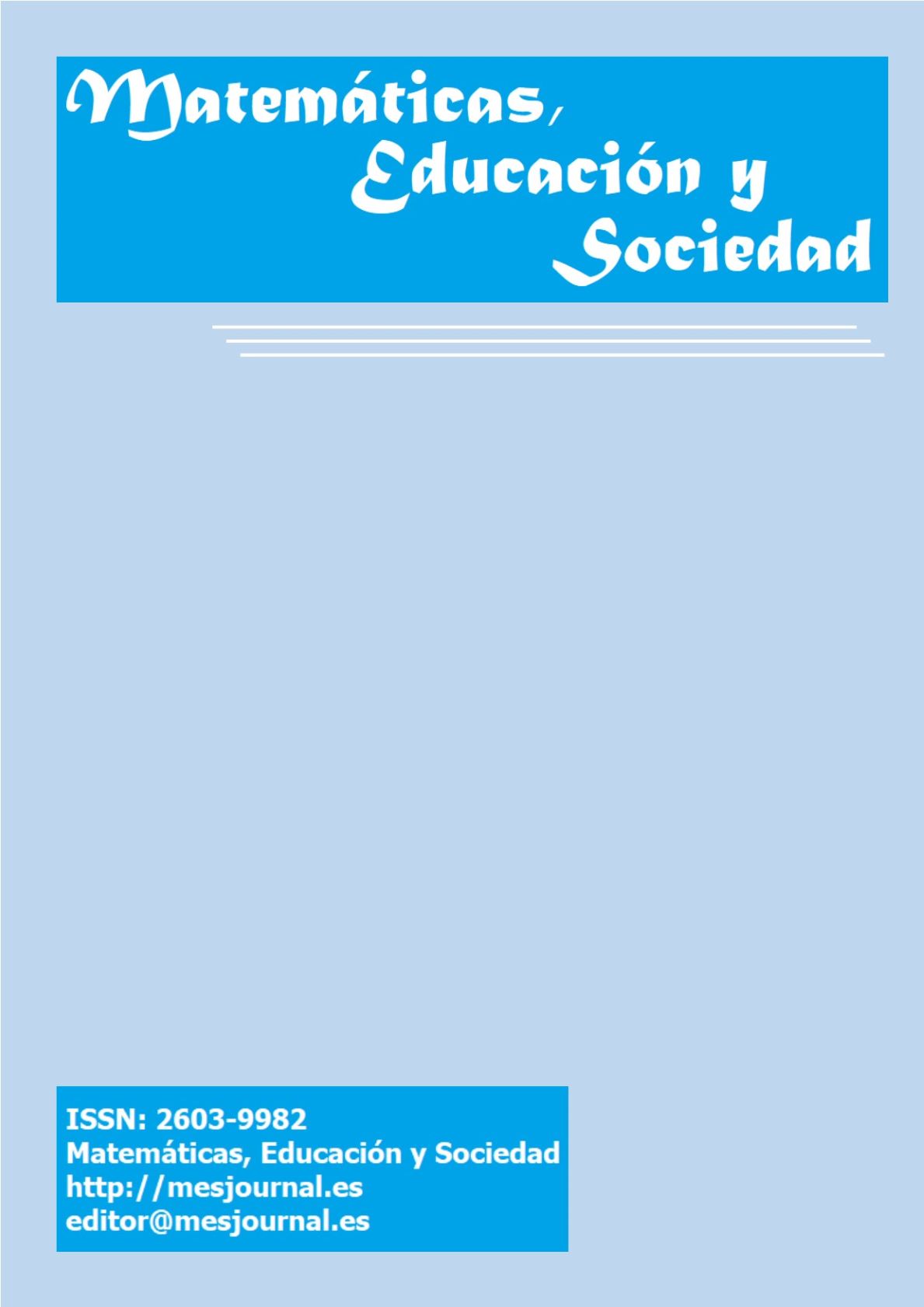Tendencias en la integración de las TIC en la Educación Matemática iberoamericana: un análisis bibliométrico de los descriptores utilizados
Contenido principal del artículo
Resumen
El presente estudio examina las tendencias en la integración de las tecnologías de la información y la comunicación (TIC) en la educación matemática en Iberoamérica mediante un análisis bibliométrico de los descriptores utilizados en publicaciones indexadas en Scopus. A partir de la recopilación y filtrado de documentos mediante el método PRISMA, se identificaron 127 artículos publicados entre 2000 y 2023, los cuales fueron categorizados en seis áreas temáticas clave. Los resultados muestran un crecimiento sostenido en la producción científica a partir de 2016, con un aumento notable desde 2020, lo que sugiere un impacto significativo de la pandemia en la digitalización del aprendizaje. Además, los términos más recurrentes en la investigación incluyen mathematics education, ICT, e-learning y educational technology. Este estudio aporta una visión integral sobre el estado actual de la investigación en el área TIC y matemáticas.
Descargas
Detalles del artículo
Esta obra está bajo una Licencia Creative Commons Atribución 3.0 España
Citas
Aggarwal, M., & Bal, S. (2020). Tools of ICT for learning and teaching mathematics. Journal of mechanics of continua and mathematical sciences, 15(4), 1-12.
Capuno, R., Revalde, H., Etcuban, J.O., Aventuna, M., Medion, G., & Demetrio, R.A.. (2019). Facilitating learning mathematics through the use of instructional media. International Electronic Journal OF Mathematics Education, 14(13), 677- 79. https://doi.org/10.29333/iejme/5785
Chao, T., Chen, J., Star, J. R., & Dede, C. (2016). Using digital resources for motivation and engagement in learning mathematics: Reflections from teachers and students. Digital Experiences in Mathematics Education, 2(3), 253-277.
Cirneanu, A. L., & Moldoveanu, C. E. (2024). Use of digital technology in integrated mathematics education. Applied System Innovation, 7(4), 66.
Diem, A., & Wolter, S. C. (2013). The use of bibliometrics to measure research performance in education sciences. Research in Higher Education, 54(1), 86-114.
Egghe, L. (1986). The dual of Bradford's law. Journal of the American Society for Information Science, 37(4), 246-255.
Gonçalves, R. A., & Rodrigues, S. J. (2023). Error in the Technological Resources Used for Mathematics Education. Modern Sciences Journal, 12(2).
Haddaway N. R., Page M. J., Pritchard C. C., and McGuinness L. A., (2022). PRISMA2020: an R package and Shiny app for producing PRISMA 2020-compliant flow diagrams, with interactivity for optimised digital transparency and open synthesis. Campbell Systematic Reviews, 18(2), https://doi.org/10.1002/cl2.1230
Hilkemeijer, M. (13 de septiembre, 2024). Why you need to integrate ICT in meaningful learning today? https://www.ictesolutions.com.au/blog/why-you-need-to-integrate-ict-in-meaningful-learning-today/
Huang, C., Yang, C., Wang, S., Wu, W., Su, J., & Liang, C. (2020). Evolution of topics in education research: A systematic review using bibliometric analysis. Educational Review, 72(3), 281-297.
Jablonka, E. (2020). Critical thinking in mathematics education. Encyclopedia of mathematics education, 159-163.
Kaya, D., & Kutluca, T. (2024). E-learning in mathematics education: A bibliometric analysis (2012-2022). Turkish Online Journal of Distance Education, 25(1), 213-246
Körtesi, P., Simonka, Z., Szabo, Z. K., Guncaga, J., & Neag, R. (2022). Challenging examples of the wise use of computer tools for the sustainability of knowledge and developing active and innovative methods in STEAM and mathematics education. Sustainability, 14(20), 12991.
Gamit, A. M. (2023). ICT integration in elementary school for mathematics subject. International Journal of Learning, Teaching and Educational Research, 22(2), 432-465.
Leimkuhler, F. F. (1967). The bradford distribution. Journal of documentation, 23(3), 197-207.
Martínez-Roa, H., Gutiérrez-Arenas, M. P. y Rodríguez-Baiget, M.J. (2024). La investigación sobre e-learning en Educación matemática. Matemáticas, Educación y Sociedad, 7(3), 1-12.
Maz-Machado, A., Gutiérrez-Rubio, D., Madrid. M. J., & Pedrosa-Jesús, C. (2022). A Look at Doctoral Theses in Mathematics Education at Andalusian Universities (2010-2020) from a Gender Perspective. TEM Journal, 11(3), 1007-1012. https://doi.org/10.18421/TEM113-03
Melero-Bolaños, J. C., Maz-Machado, A., León-Mantero, C. M., & Rodríguez-Baiget, M. J. (2024). Spanish Doctoral Dissertations on the Properties of Materials in Engineering. International Journal of Engineering Pedagogy (iJEP), 14(6), pp. 69–81. https://doi.org/10.3991/ijep.v14i6.46797
Muhtadi, D., Kartasasmita, B. G., & Prahmana, R. C. I. (2017). The Integration of technology in teaching mathematics. In Journal of Physics: Conference Series (Vol. 943, No. 1, p. 012020). IOP Publishing.
Pepin, B., Choppin, J., Ruthven, K., & Sinclair, N. (2017). Digital curriculum resources in mathematics education: foundations for change. ZDM, 49, 645-661.
Perea-Valero, Y., Cuida, A., & Salgado-Horta, D. (2024). Dissemination of ICT Research in Ibero-America: An Approach to Trends in Education. Revista De Gestão Social E Ambiental, 18(9), e08568. https://doi.org/10.24857/rgsa.v18n9-156.
Rana, K., & Rana, K. (2020). ICT Integration in Teaching and Learning Activities in Higher Education: A Case Study of Nepal's Teacher Education. Malaysian Online Journal of Educational Technology, 8(1), 36-47. http://doi.org/10.17220/mojet.2020.01.003
Roberts, L. N. (2023). Mainstreaming ADDIE Methodology in ICT Integration Lesson Planning and Delivery. In The Impact and Importance of Instructional Design in the Educational Landscape (pp. 62-90). IGI Global.
Torres-Gastelú, C. A., & Kiss, G. (2016). Perceptions of Students towards ICT Competencies at the University. Informatics in Education, 15(2), 319-338. http://doi.org/10.15388/infedu.2016.16
Zabidi, M. A. N. B., Bakti, A. A., Sultan, J., Ayuni, R. T., & Arriza, L. (2024). Trends in implementation of technology use in mathematics education on SCOPUS database: bibliometric analysis. Mathematics Research and Education Journal, 8(1), 53-70.

